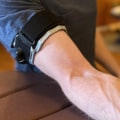There is evidence that bfr training can boost athletic training and may even help patients with chronic pain or other conditions to build muscle more easily, provided it is done correctly. Occlusion training involves disrupting blood flow to the limbs at work. A tourniquet or bracelet is placed around the limb and the pressure increases as the workout begins. BFR is promising as part of a program, but it does not occupy a place on the priority table.
Since training is limited to work of low load and intensity, research does not indicate that it is more effective than training at maximum speed or high speed. I don't recommend BFR for muscle building outside of complementary recovery workouts and early return-to-play rehabilitation. Or maybe you've heard a rumor that blood flow restriction (BFR) training can help enlarge your muscles without the need to dramatically increase the weight you're lifting. Although there is a lot of research suggesting that BFR training may occupy an important place in your program, there are no established guidelines for wrapping styles, tightness, scheduling, and training intensities.
If an athlete combines low-load, low-intensity training with a conventional program, the differences are likely to be small and managing group training is a big challenge. BFR has been used in a variety of musculoskeletal pathologies and, to date, has not produced serious adverse events for those who have no contraindications to BFR training. There is no reason for you to have to adapt this particular training method if you simply prefer not to. This causes blood to stay inside the muscles for longer than normal, which, as you will soon see, influences muscle physiology in several ways.
When you're really an intermediate lifter (with at least six months of continuous training under your belt), you probably have a solid muscle base to build on. Technically, the BFR is a “reverse pump”, and athletes enjoy the feeling of low-load strength training because it creates a metabolic and immune system disruption with a similar feeling. We typically see benefits with HRV, similar to research on leg training and post-session parasympathetic changes that rely on pain mitigation. So far, most research on BFR has been completed with BFR in combination with low-intensity resistance training.
For healthy people looking to gain strength, occlusion training can be performed with heavier weights and with high intensity. Blood flow restriction training, also called occlusion training, involves placing an inflatable cuff on the limb you are exercising. Surprisingly, research shows that there is no evidence that blood flow restriction training is dangerous. But overall, your level of training experience can shed some light on whether you should try BFR training.
I've learned that recovery training is rather an art by doing something now for future benefits, without expecting an acute benefit immediately outside of some changes in brain chemistry or responses to opiates.



Leave Reply